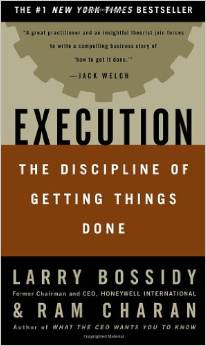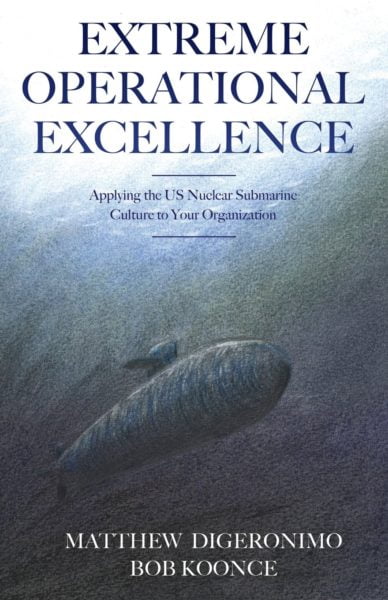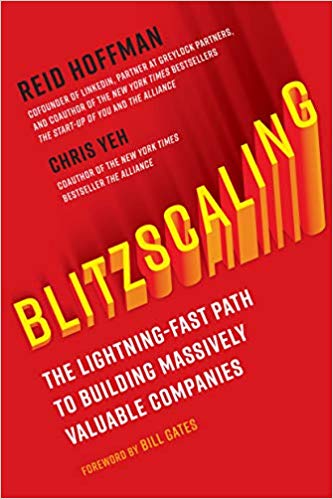Execution: The Discipline of Getting Things Done
The book that shows how to get the job done and deliver results . . . whether you’re running an entire company or in your first management job.
Larry Bossidy is one of the world’s most acclaimed CEOs, a man with few peers who has a track record for delivering results. Ram Charan is a legendary advisor to senior executives and boards of directors, a man with unparalleled insight into why some companies are successful and others are not. Together they’ve pooled their knowledge and experience into the one book on how to close the gap between results promised and results delivered that people in business need today.
After a long, stellar career with General Electric, Larry Bossidy transformed AlliedSignal into one of the world’s most admired companies and was named CEO of the year in 1998 by Chief Executive magazine. Accomplishments such as 31 consecutive quarters of earnings-per-share growth of 13 percent or more didn’t just happen; they resulted from the consistent practice of the discipline of execution: understanding how to link together people, strategy, and operations, the three core processes of every business.
Leading these processes is the real job of running a business, not formulating a “vision” and leaving the work of carrying it out to others. Bossidy and Charan show the importance of being deeply and passionately engaged in an organization and why robust dialogues about people, strategy, and operations result in a business based on intellectual honesty and realism.
The leader’s most important job—selecting and appraising people—is one that should never be delegated. As a CEO, Larry Bossidy personally makes the calls to check references for key hires. Why? With the right people in the right jobs, there’s a leadership gene pool that conceives and selects strategies that can be executed. People then work together to create a strategy building block by building block, a strategy in sync with the realities of the marketplace, the economy, and the competition. Once the right people and strategy are in place, they are then linked to an operating process that results in the implementation of specific programs and actions and that assigns accountability. This kind of effective operating process goes way beyond the typical budget exercise that looks into a rearview mirror to set its goals. It puts reality behind the numbers and is where the rubber meets the road.
Putting an execution culture in place is hard, but losing it is easy. In July 2001 Larry Bossidy was asked by the board of directors of Honeywell International (it had merged with AlliedSignal) to return and get the company back on track. He’s been putting the ideas he writes about in Execution to work in real time.
More info →Extreme Operational Excellence: Applying the US Nuclear Submarine Culture to Your Organization
THE NAVY'S SILENT WARRIORS LIVE AND BREATHE OPERATIONAL EXCELLENCE. How does a group of 130 men with an average age of 25 operate a nuclear power plant in the ocean's harshest environments while conducting complex clandestine operations aboard a 6900-ton warship with nearly flawless results? The answer lies in the community's culture which epitomizes the tireless pursuit of Operational Excellence. Applying the US Nuclear Submarine Culture to Your Organization Operational Excellence is a journey, not a destination. Let Matt and Bob give you a tour of the Navy's Silent Warriors' commitment to this journey that began nearly seven decades ago. DISCOVER: How to create a culture of intellectual integrity and the pursuit of knowledge. How to engage employees through procedural compliance and standards. How to foster an environment that fully leverages the talent of each individual. How to strengthen an organization by thoroughly evaluating mistakes. How to lead an organization to Operational Excellence from any starting point.
More info →The First 90 Days: Proven Strategies for Getting Up to Speed Faster and Smarter
Named one of 100 Leadership & Success Books to Read in a Lifetime by Amazon Editors
The world’s most trusted guide for leaders in transition
Transitions are a critical time for leaders. In fact, most agree that moving into a new role is the biggest challenge a manager will face. While transitions offer a chance to start fresh and make needed changes in an organization, they also place leaders in a position of acute vulnerability. Missteps made during the crucial first three months in a new role can jeopardize or even derail your success.
In this updated and expanded version of the international bestseller The First 90 Days, Michael D. Watkins offers proven strategies for conquering the challenges of transitions—no matter where you are in your career. Watkins, a noted expert on leadership transitions and adviser to senior leaders in all types of organizations, also addresses today’s increasingly demanding professional landscape, where managers face not only more frequent transitions but also steeper expectations once they step into their new jobs.
By walking you through every aspect of the transition scenario, Watkins identifies the most common pitfalls new leaders encounter and provides the tools and strategies you need to avoid them. You’ll learn how to secure critical early wins, an important first step in establishing yourself in your new role. Each chapter also includes checklists, practical tools, and self-assessments to help you assimilate key lessons and apply them to your own situation.
Whether you’re starting a new job, being promoted from within, embarking on an overseas assignment, or being tapped as CEO, how you manage your transition will determine whether you succeed or fail. Use this book as your trusted guide.
More info →Getting the Right Things Done: A Leader’s Guide to Planning and Execution
For companies to be competitive, leaders must engage people at all levels in order to focus their energy and enable them to apply lean principles to everything they do. Strategy deployment, called hoshin kanri by Toyota, has proven to be the most effective process for meeting this ongoing challenge. In his new book Getting the Right Things Done, author and LEI faculty member Pascal Dennis outlines the nuts and bolts of strategy deployment, answering two tough questions that ultimately can make or break a company's lean transformation: * What kind of planning system is required to inspire meaningful company-wide continuous improvement? * How might we change existing mental models that do not support a culture of continuous improvement? Getting the Right Things Done demonstrates how strategy deployment can help leaders harness the full power of Lean. Organization leaders at all levels and the management teams who are responsible for strategy deployment will find this book especially insightful. It tells the story of a fictional (yet very real) midsized company, Atlas Industries that needs to dramatically improve to compete with emerging rivals and meet new customer demands. Getting the Right Things Done chronicles the journey of the company and its President/COO, an experienced lean leader who was hired five years ago to steer Atlas in the right direction. While Atlas had already applied some basic lean principles, it had not really connected the people and business processes so that the company could dramatically improve. Atlas' challenge: "Something was missing: a way of focusing and aligning the efforts of good people, and a delivery system, something that would direct the tools to the right places." Enter strategy deployment. The book is designed to provide readers with a framework for understanding the key components of strategy deployment: agreeing on the company's "True North," working within the PDCA cycle, getting conse
More info →Blitzscaling: The Lightning-Fast Path to Building Massively Valuable Companies
LinkedIn cofounder, legendary investor, and host of the award-winning Masters of Scale podcast reveals the secret to starting and scaling massively valuable companies.
What entrepreneur or founder doesn’t aspire to build the next Amazon, Facebook, or Airbnb? Yet those who actually manage to do so are exceedingly rare. So what separates the startups that get disrupted and disappear from the ones who grow to become global giants?
The secret is blitzscaling: a set of techniques for scaling up at a dizzying pace that blows competitors out of the water. The objective of Blitzscaling is not to go from zero to one, but from one to one billion –as quickly as possible.
When growing at a breakneck pace, getting to next level requires very different strategies from those that got you to where you are today. In a book inspired by their popular class at Stanford Business School, Hoffman and Yeh reveal how to navigate the necessary shifts and weather the unique challenges that arise at each stage of a company’s life cycle, such as: how to design business models for igniting and sustaining relentless growth; strategies for hiring and managing; how the role of the founder and company culture must evolve as the business matures, and more.
Whether your business has ten employees or ten thousand, Blitzscaling is the essential playbook for winning in a world where speed is the only competitive advantage that matters.
More info →








